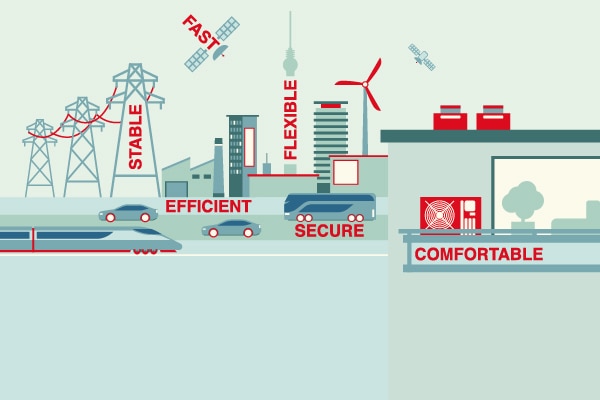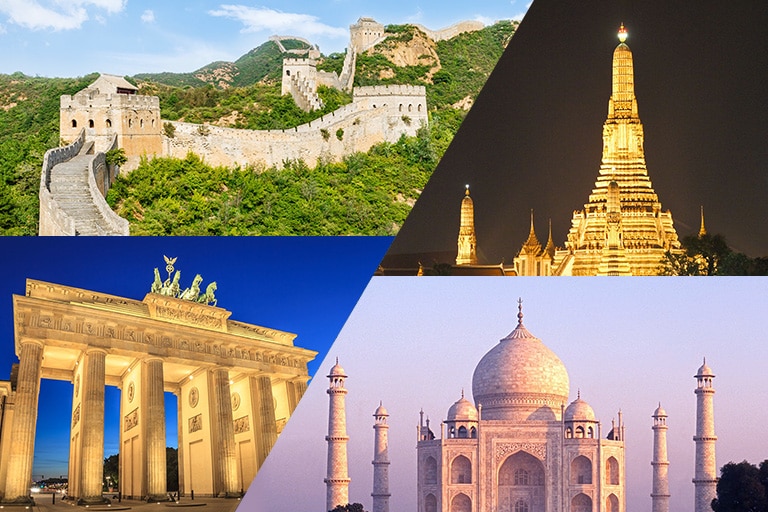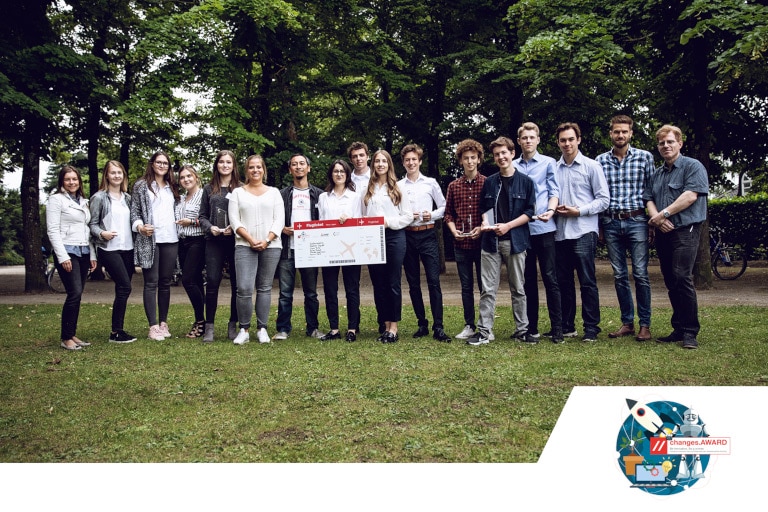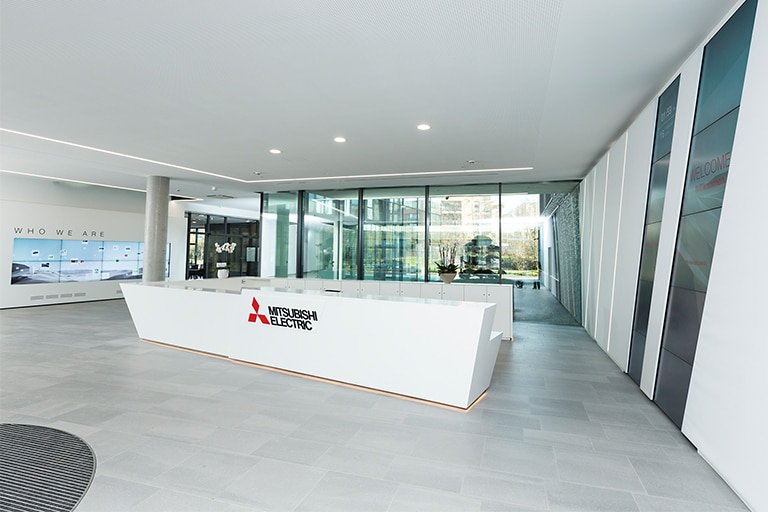History of Mitsubishi Electric
History of Mitsubishi Group
The Founder

Iwasaki Yataro
(1835-1885)
An ambitious young man named Yataro Iwasaki launched the first Mitsubishi company—a shipping firm—in 1870. Japan had just emerged from centuries of feudal isolation and was racing to catch up with the West. Yataro's business grew rapidly and diversified into a broad range of manufacturing and commerce. World War II brought an end to Mitsubishi as an integrated organisation. But independent companies that trace their roots to the old Mitsubishi are active today in nearly every sector of industry.
Yataro Iwasaki was from the city of Kochi on the island of Shikoku, which was the home of the powerful Tosa clan. He worked for the clan and distinguished himself in managing its Osaka trading operations. In 1870, he set up his own shipping company, Tsukumo Shokai, with three steamships chartered from the clan. That was the beginning of Mitsubishi.
Photo Courtesy of Mitsubishi Archives.
Origins of the Famous Emblem

The three-diamond mark in an early appearance on an iron water vessel
The name of the new company changed to Mitsukawa Shokai in 1872 and to Mitsubishi Shokai in 1874. Yataro chose a corporate emblem that combined the three oak leaves of the Tosa crest and the three stacked diamonds of his family crest. That emblem is the source of the name, Mitsubishi, which means "three diamonds".
Yataro made a public display of patriotism in 1874, providing ships to carry Japanese troops to Taiwan. That earned the gratitude of the government, which rewarded him with 30 vessels. Yataro changed his company's name to Mitsubishi Mail Steamship in 1875, when it inherited the employees and facilities of a mail service disbanded by the government.
Rapid Growth. Then Adversity

One of Yataro's steamships, the sidewheeler Tokyo-maru
Mitsubishi Mail Steamship inaugurated service to China and Russia and enjoyed a virtual monopoly on overseas routes. But the political winds shifted against Mitsubishi in the early 1880s, and the government sponsored the establishment of a competitor. The ensuing competition nearly bankrupted both companies.
Government intervention produced a temporary truce. But cut-throat competition resumed when Yataro died in 1885 and was succeeded by his brother Yanosuke. The feud ended with a government-arbitrated merger in 1885, which created Nippon Yusen--today's NYK Line.
Beyond Shipping

Extracting coal in Nagasaki at the Takashima Mine
While competition was escalating on the sea, Mitsubishi was diversifying ashore. The company purchased the Yoshioka copper mine in Akita and Takashima coal mine in Nagasaki. It leased the Nagasaki Shipbuilding Yard from the government in 1884 and later engineered Japan's first domestically produced steel steamship there.
Mitsubishi continued to grow and diversify under the autocratic leadership of Yanosuke Iwasaki. He bought up more mines to provide resources for Mitsubishi and Japan's growing industries. And he dropped "Steamship" from the company name. He also paid the equivalent of approximately US$1 million for 80 acres of swampy marsh next to the Imperial Palace in 1890. Ridiculed at the time, Yanosuke's investment today is worth many billions of dollars.
Modern Management

The home of Meiji Life and Tokio Marine around 1895
Yataro's son, Hisaya, assumed the presidency in 1893. The University of Pennsylvania graduate restructured Mitsubishi to support increasingly diverse business operations. He set up divisions for banking, real estate, marketing, and administration, as well as for the original mining and shipbuilding businesses.
Some of Hisaya's private investments are part of today's Mitsubishi companies. He purchased the Kobe Paper Mill, which is today's Mitsubishi Paper Mills. And he backed the founding of Kirin Brewery. His cousin Toshiya founded Asahi Glass, Japan's first successful manufacturer of plate glass.
Mitsubishi management modernised further when Yanosuke's son Koyata succeeded Hisaya as president in 1916. Koyata, a graduate of Cambridge University, incorporated the divisions as semi-autonomous companies. He steered Mitsubishi to leadership in such sectors as machinery, electrical equipment and chemicals. The companies that later became Mitsubishi Heavy Industries developed automobiles, aircraft, tanks and buses. And Mitsubishi Electric became a leader in electrical machinery and in home appliances.
Beyond the Family

A motorised three-wheeler by Mitsubishi Heavy Industries
The Iwasaki family relinquished some of its control over Mitsubishi through a public offering of shares in the core holding company. By the end of World War II, outside investors held more than one-half of the equity.
Koyata Iwasaki encouraged his managers and employees to stand above the xenophobia that swept Japan during the war years. "We count many British and Americans among our business partners," he reminded Mitsubishi executives shortly after the outbreak of hostilities. "They are our friends who have undertaken projects together with us and who have shared interests with us. Should peace come again, they should again become good and faithful friends."
Separate Paths

Central Tokyo's Marunouchi district—home to most of the Mitsubishi companies
After the war, the allied occupation forces demanded that Japan's big industrial groups disband. Mitsubishi Headquarters disbanded on 30 September 1946, and many of the Mitsubishi companies split into smaller enterprises. The trading arm fragmented into 139 companies. Mitsubishi Heavy Industries became three regional companies. Most of the Mitsubishi companies abandoned the name and emblem under pressure from the occupation forces.
On the outbreak of the Korean War, the occupation policy shifted to an emphasis on industrial and economic reconstruction. Some of the Mitsubishi companies reconstituted themselves, and most began using the name and emblem again. But they retained their autonomy. The companies achieved far more individually and independently than they ever could have accomplished as a single organisation. At the same time, they benefit from the shared sense of community that accrues from a common history and corporate culture.
Text & Photo Courtesy of Mitsubishi Public Affairs Committee.








